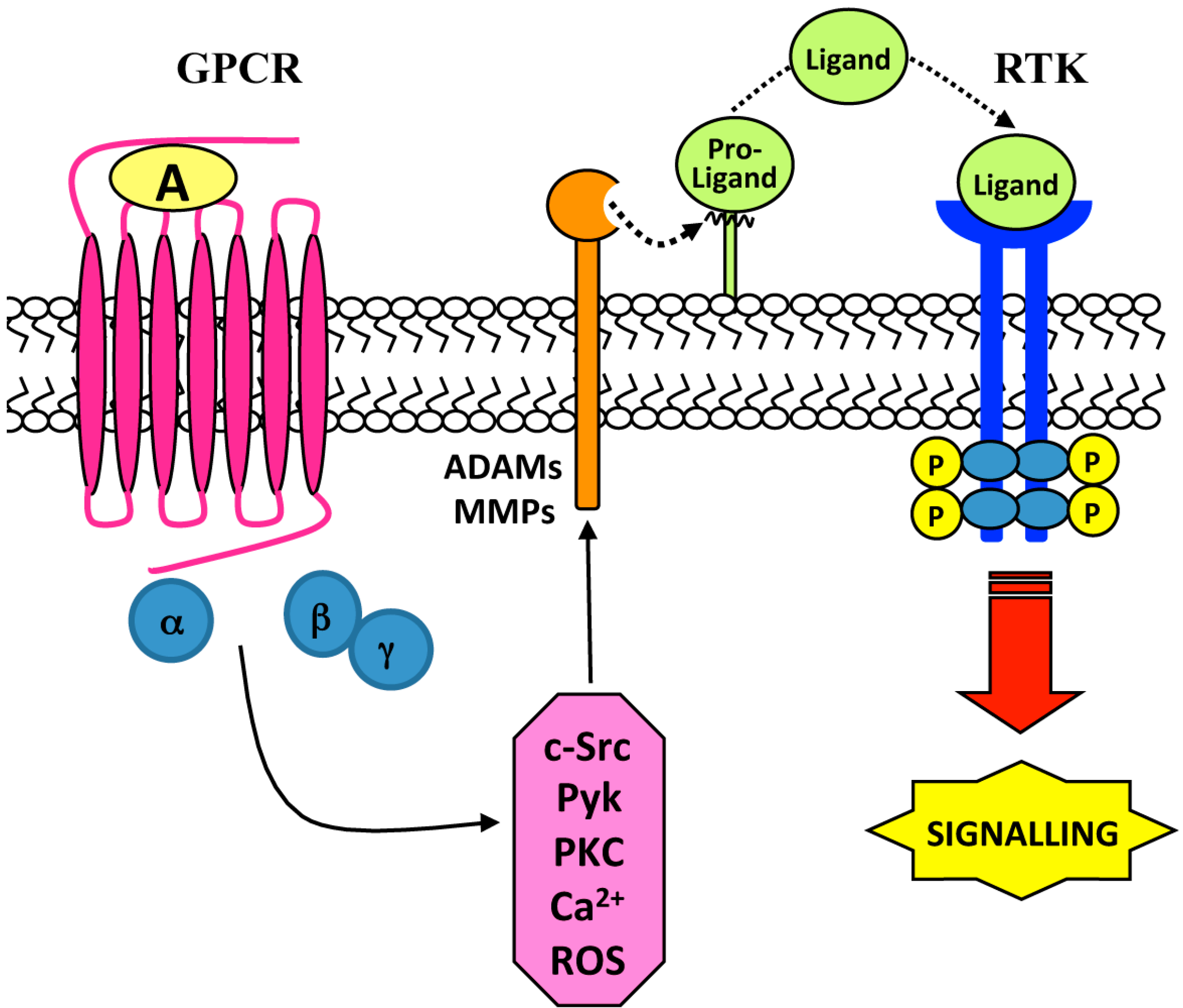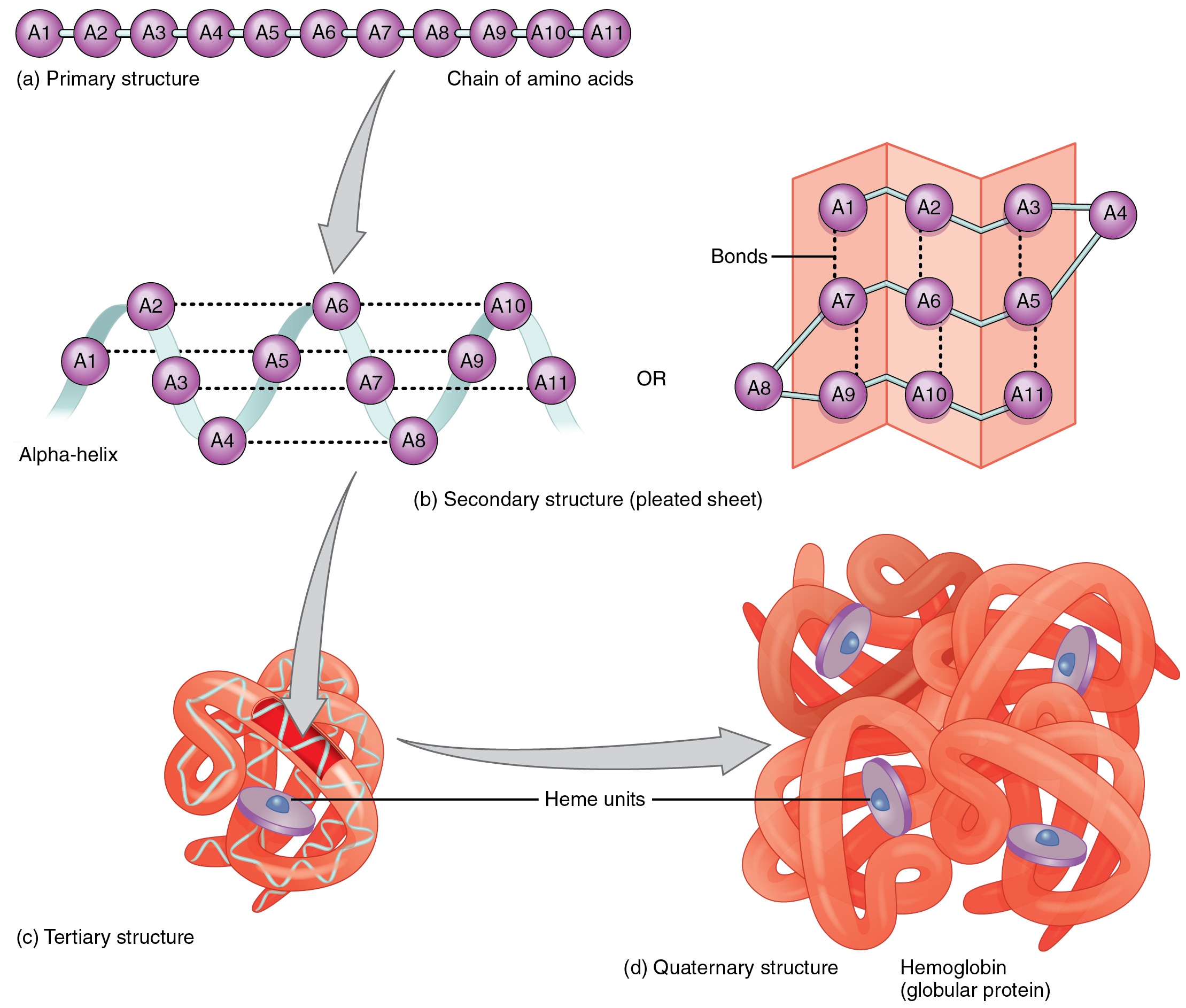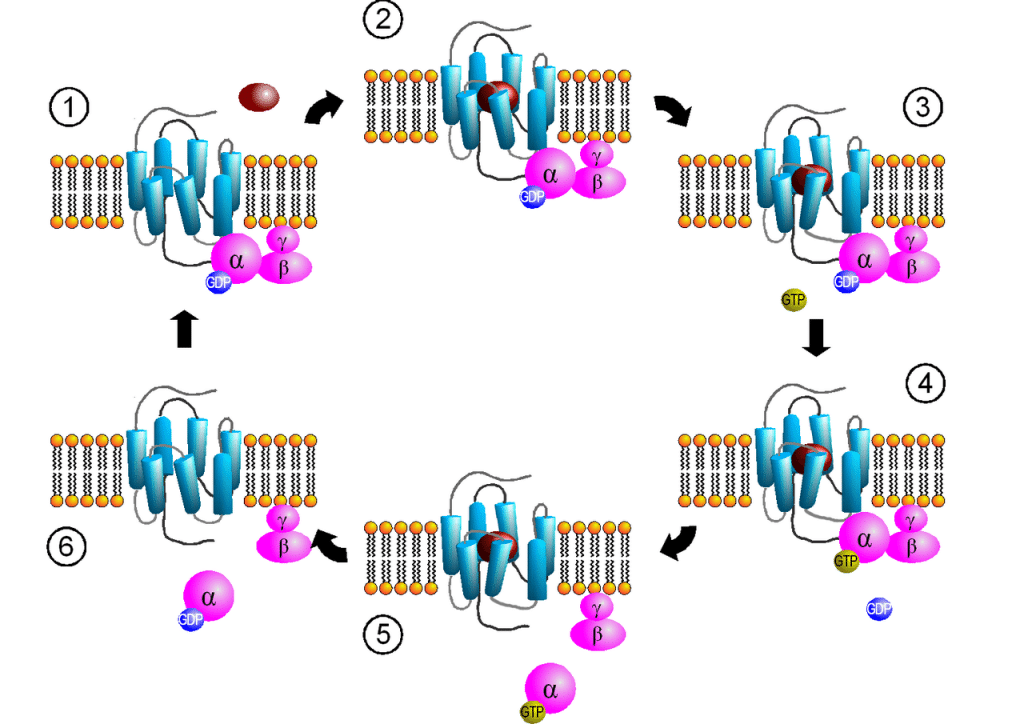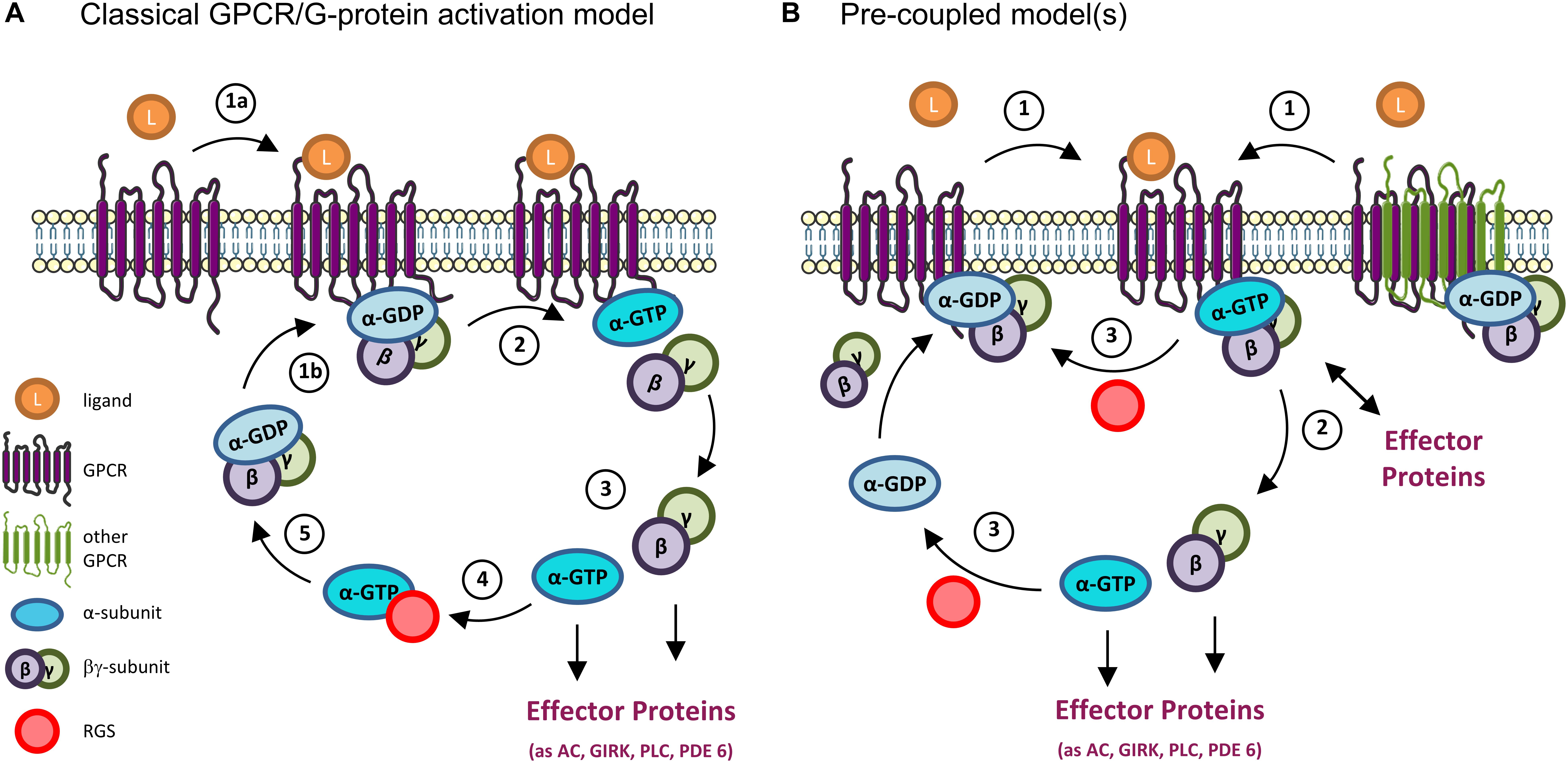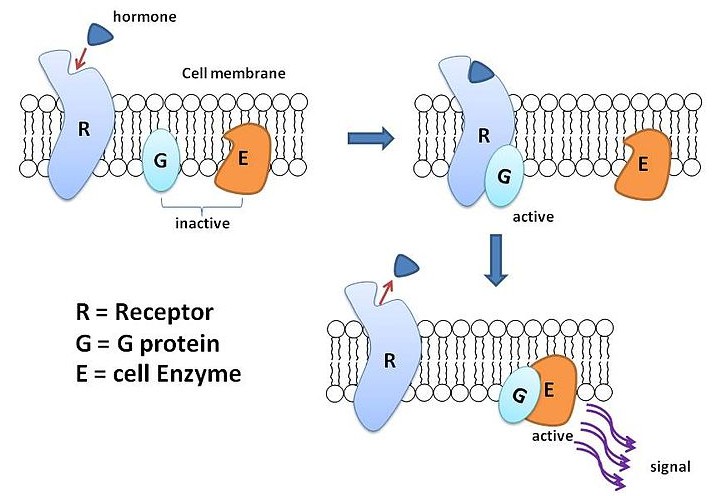G-protein Coupled Receptors Presentation
| Introduction to G-Protein Coupled Receptors | ||
|---|---|---|
| G-Protein Coupled Receptors (GPCRs) are a large family of cell surface receptors. They play a crucial role in cellular signaling and are involved in a wide range of physiological processes. GPCRs are characterized by their ability to interact with G proteins, which are key mediators of signal transduction. | ||
| 1 | ||
| Structure of GPCRs | ||
|---|---|---|
| GPCRs consist of a single polypeptide chain that spans the cell membrane seven times. The extracellular loops of GPCRs are involved in ligand binding, while the intracellular loops interact with G proteins. The C-terminal tail of GPCRs is responsible for receptor desensitization and internalization. | ||
| 2 | ||
| Ligand Binding and Activation of GPCRs | ||
|---|---|---|
| Ligands, such as hormones or neurotransmitters, bind to the extracellular domain of GPCRs. Upon ligand binding, GPCRs undergo conformational changes that activate the associated G protein. Activated G proteins then dissociate from the receptor and modulate downstream signaling pathways. | ||
| 3 | ||
| G Protein Activation and Signaling Pathways | ||
|---|---|---|
| G proteins are heterotrimeric complexes consisting of α, β, and γ subunits. Upon activation, the Gα subunit exchanges GDP for GTP and dissociates from the βγ subunits. Both Gα and βγ subunits can activate or inhibit various effector proteins, leading to the generation of second messengers or modulation of ion channels. | ||
| 4 | ||
| Diversity of GPCRs | ||
|---|---|---|
| GPCRs are classified into different families based on their sequence similarity and ligand specificity. The largest family is the rhodopsin-like family, which includes receptors for neurotransmitters, hormones, and sensory stimuli. Other GPCR families include the secretin-like, metabotropic glutamate, and adhesion families. | ||
| 5 | ||
| Therapeutic Significance of GPCRs | ||
|---|---|---|
| GPCRs are the target of approximately 30% of all current drugs. Modulating GPCR activity can have therapeutic benefits in various diseases, such as hypertension, asthma, and psychiatric disorders. Understanding the structure and function of GPCRs is crucial for the development of more effective and specific drugs. |  | |
| 6 | ||
| Challenges and Future Directions | ||
|---|---|---|
| GPCR signaling is highly complex and involves cross-talk between different signaling pathways. Advances in structural biology techniques, such as cryo-electron microscopy, are providing insights into the detailed mechanisms of GPCR activation. Targeting specific GPCR subtypes with greater selectivity and minimizing adverse effects remains a challenge in drug discovery. | ||
| 7 | ||
| Summary | ||
|---|---|---|
| G-Protein Coupled Receptors are a diverse family of cell surface receptors involved in cellular signaling. Ligand binding to GPCRs triggers conformational changes that activate G proteins. GPCRs play a crucial role in numerous physiological processes and are an important target for drug development. | ||
| 8 | ||
